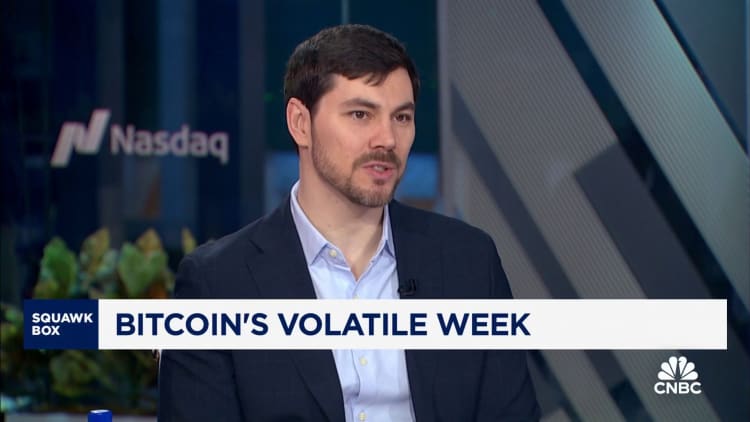Bitcoin’s recent rise has contributed to investor FOMO
Photographer, Basak Gurbuz Derman | Moment | Getty Images
When it comes to investor maladies, fear of missing out, or FOMO, is the clinical term for buying a security after a meteoric price increase because you don’t want to be left behind. There is no known cure for this condition, which has been linked to numerous bad investment decisions.
Bitcoin caught the attention of investors in 2020 because the price skyrocketed from $7,194 a coin to a peak of $60,360 in November 2021. Just as we became comfortable with digital gold, the price declined all the way back to $16,547 at the end of 2022.
Today’s environment is déjà vu all over again, a feeding frenzy of quick profits that few of us want to miss out on.
Last week, bitcoin climbed to a record $73,679, a price surge of nearly 70% from the start of the year. Prices have since eased somewhat: As of early Wednesday, the flagship currency was trading at around $62,500, due in part to the news Tuesday that Japan raised interest rates for the first time in 17 years.
How does monetary policy influence bitcoin?
The value proposition for bitcoin is that it serves as a store of value because there will only be a maximum of 21 million bitcoins available. When you buy bitcoin, you are exchanging something in abundance, namely a dollar, for something that is scarce, which in this case is bitcoin.
When the Fed increased liquidity in 2020 the case for bitcoin was obvious. Similarly, once the Fed reversed course and raised rates in 2022 the opposite dynamic occurred.
In other words, bitcoin’s price will be heavily influenced and correlated to the global money supply.
Why did bitcoin go up last year?
You can make the case that the Fed reduced the rate at which it tightened, which on a rate of change basis increased liquidity. Moreover, the banking crisis forced the Fed to open the discount window first and then create a Bank Term Funding Program that allowed regional banks to pledge illiquid bonds as collateral in exchange for much needed liquidity. These events were tailor made for the scarcity trade.
Where do things stand today for bitcoin?
There are a couple of things to consider when deciding if it’s too late to buy bitcoin.
First, what do investors believe will happen to liquidity? Or said another way, will the Fed accelerate a campaign of tightening?
Inflation may be sticky, but it’s not high enough to warrant a rate hike. If anything, investors are anticipating a rate cut. There is also a matter of the commercial real estate loans that come due this year and concerns about the regional banks that may force the Fed to provide resources that mitigate a contagion.
Second, bitcoin has been approved as a spot ETF. If bitcoin is indeed a hoax it must have quite the sales pitch because stalwarts such as Schwab, Fidelity, Van Eck and Blackrock are all on board, the SEC notwithstanding.
In fact, Grayscale’s 2021 Bitcoin Investment Survey found that 77% of investors who did not own bitcoin would be more likely to buy it if there were an ETF, and according to a recent Coinbase report, 59% of institutional investors plan to increase allocations to crypto over the next three years. Lo and behold, bitcoin ETFs have attracted over $3.5 billion in new inflows in March as of this writing, the supply and demand dynamic pushing the price higher.
What’s the best way to participate?
While bitcoin should be handled with care, investors should use the same investment principles applied to other positions. If a security is significantly more volatile than the market, it makes sense to hold a smaller position.

It’s advisable to dollar cost average 1% at a time until you reach the position size that suits your risk tolerance. Once you are fully invested, make sure to rebalance quarterly to mitigate the roller coaster ride and ensure that you participate on the upside.
The goal is to incorporate a repeatable process, so you have less fear and avoid missing out. Fortunately, the same investment methods you use for a traditional portfolio are applicable to bitcoin as well.
— By Ivory Johnson, certified financial planner and the founder of Delancey Wealth Management in Washington, D.C. He is a member of the CNBC Financial Advisor Council.